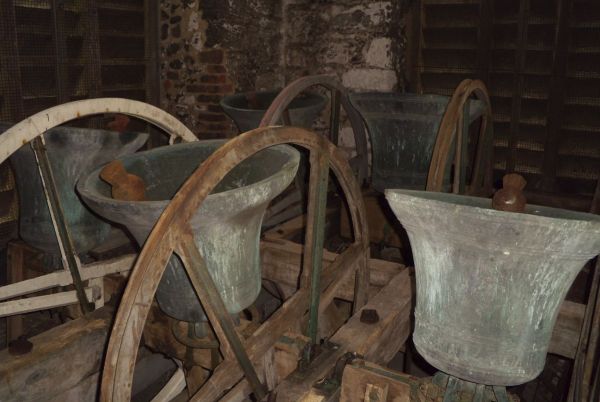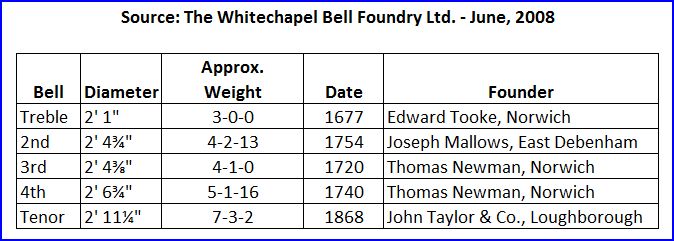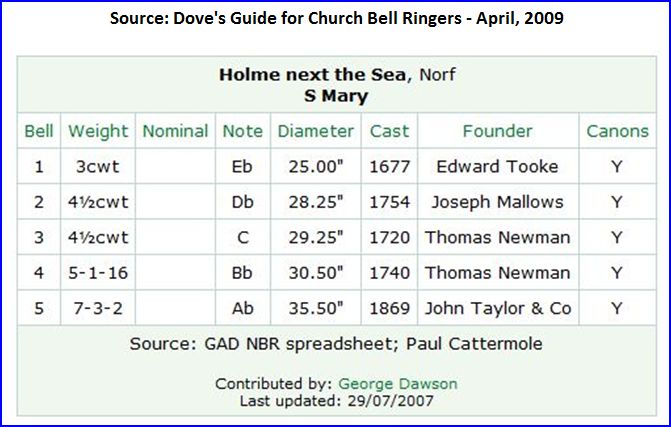About the bells...
The Tower
The main entrance of the Church is set into the south side of the tower and the ceiling of the entrance porch supports the floor of the ringing chamber.
Passing through the main door of the Church into the inner entrance porch one finds the entrance door to the tower on the left. The staircase winds upwards
with a left-hand spiral - a feature only shared by about 5% of tower staircases.
The first door on the staircase leads to the ringing room. A rare feature here is the stone floor with no trap-doors for the passage of bells up and down the tower.
There are worn shallow depressions in the floor caused by past generations of ringers as they stand at the ropes.These days the five ropes are always left hoisted
high attached to a 'spider'. This is a device made of solid oak with five hooks on which the tail ends of the ropes are attached. The spider is then raised aloft
by a line attached to pulleys thus keeping the ropes safely out of harm's way when not in use.
Leaving the ringing room and continuing up the tower stairs another doorway is seen leading to an intermediate room sometimes known as a sounding chamber. There is
little of interest to see here apart from five box like chutes which guide the ropes down from the belfry above to the ringing room below.
Climbing the next section of the staircase soon reveals a locked door which leads to the belfry. Housed within are the five bells hanging in an oak frame dating from
around the 1850s. The frame does have six 'pits' five of which are fitted with a bell leaving one spare. Who knows - perhaps a sixth bell may be installed one day!
Each of the four walls of the belfry has a large window fitted with louvres so that the sound of the bells can pass freely out of the tower.
The Bells


In the time of Edward VI, about 1547, there was one bell weighing 5 cwt. A peal of five bells was rehung in a six-bell frame by Taylor & Co. of Loughborough,
A.D. 1868. The old Tenor bell (6 cwt. 1 qr.) was recast and extra metal added to make the present Tenor bell. The Rev. N.J. Raven was the Vicar at the time.
Depending on which source you choose to look at the details of the current ring of five do vary somewhat! So here are three different sets of facts and figures:



The Tenor sounds the note of Ab - or fairly close!
In the ringing room the five ropes hang in a rather tight circle, ringing clockwise, and are hoisted aloft on a 'spider' when not in use.

